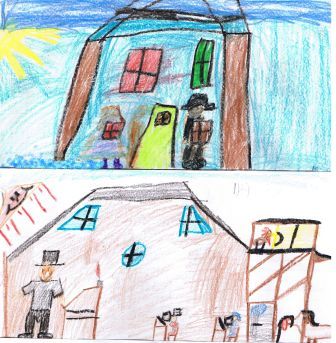 Did you know… that kids are linking the skills they practice in school today to the abilities they’ll need to master tomorrow? Opportunities to witness the beauty of the natural world—and express compassion for its fragility—help sustain their interest in the biological and earth sciences.
Did you know… that kids are linking the skills they practice in school today to the abilities they’ll need to master tomorrow? Opportunities to witness the beauty of the natural world—and express compassion for its fragility—help sustain their interest in the biological and earth sciences.South Kingstown’s 1st through 5th graders spent one recent ‘CLP Monday’ exploring the vital role of the wildlife biologist. The district’s Community Learning Program featured Janis Nepshinsky of the U.S. Fish and Wildlife Service, who underscored the most important aspect of her job: preventing the extinction of Rhode Island’s wildlife.
Janis took the students on a visual tour of Rhode Island’s National Wildlife Refuges. Images of Block Island beaches, Charlestown’s Ninigret Park, Sachuest Point, and the John H. Chafee Nature Preserve at Pettaquamscutt Cove looked familiar to many. Janis listened to students call out their favorite local wildlife, from snapping turtles and trout to the newly reclaimed piping plover. “Every animal you named needs a place to live, food to eat, and a place to play, just like you do,” Janis pointed out. She drew their attention to the fact that Rhode Island has FIVE of the United States’ 545 National Wildlife Refuges.
“Part of a U.S. Fish and Wildlife biologist’s job is to protect the homes of animals, “habitats,” from harm caused by invasive plants, people and their pets,” Janis explained. No dogs, horses or motor vehicles are allowed on a National Wildlife Refuge; nor hunting, fishing and wild harvesting. The plants and prey are there for the animals that live there,” Janis added, reminding students that many species of birds need RI’s coastline for nesting grounds and food. “Birds fly south, migrating from Maine to Florida, and these wildlife refuges act as ‘rest stops’ for refueling, just like your families need on long trips.”
When Janis showed a two-foot long, preserved snapping turtle with its brilliant shiny shell, the 300+ students were in awe. When she told of poachers suffocating the turtles for their shells, they were stunned. Seeing the water-loving turtle on his back was saddening—and further convinced them that protecting wildlife is a worthwhile career.

Keep up the good work, CLP!
Fall CLP presentations also feature Mark Hall of Biomes Marine Biology Center, Claire Hall of the “Did You Know?” Foundation, and Jennifer West of the Narragansett Bay Research Reserve. All four South Kingstown elementary schools participate in this academically enriching and community-bridging program.
 Take a walk on the wild side!
Take a walk on the wild side!Can you name the National Wildlife Refuge in either photo? If you can, and you’re an S.K. elementary school student, call CLP reporter Rebecca Briggs, (401) 533–0116.
The Charlestown Press, Nov. 19, 2009 (Page A-7)




No comments:
Post a Comment